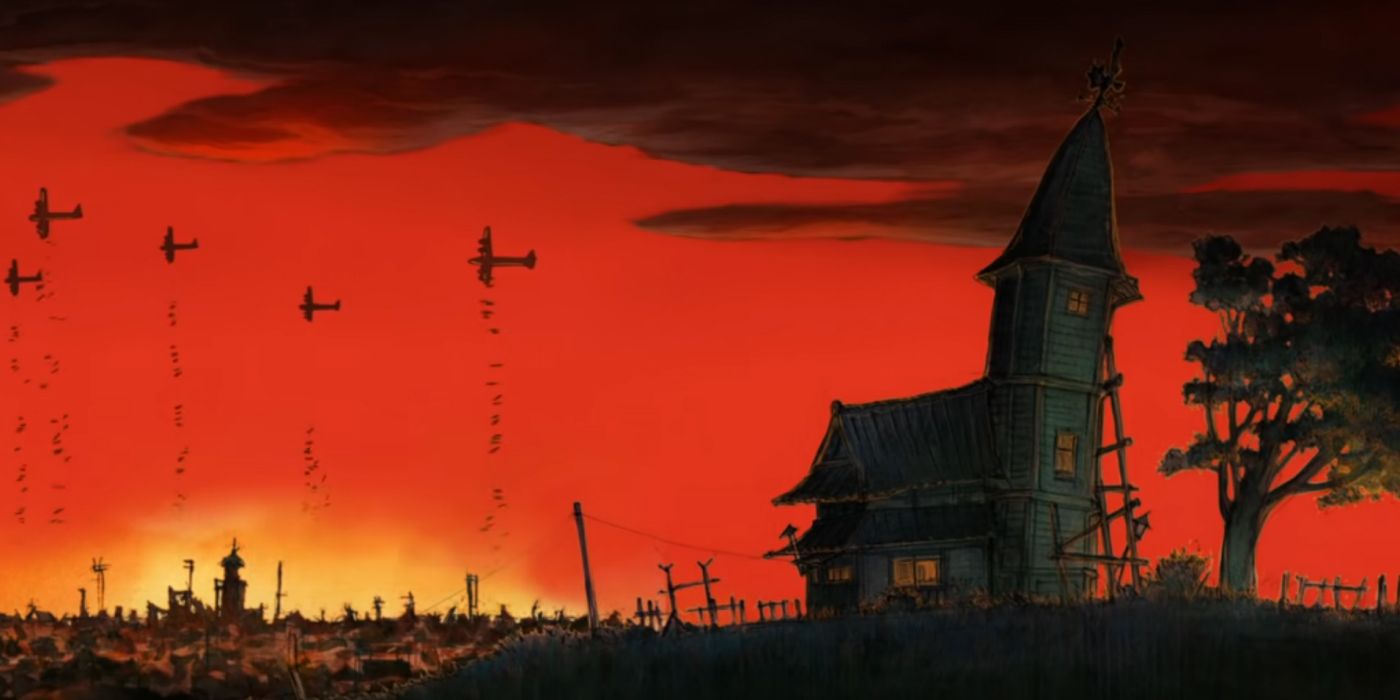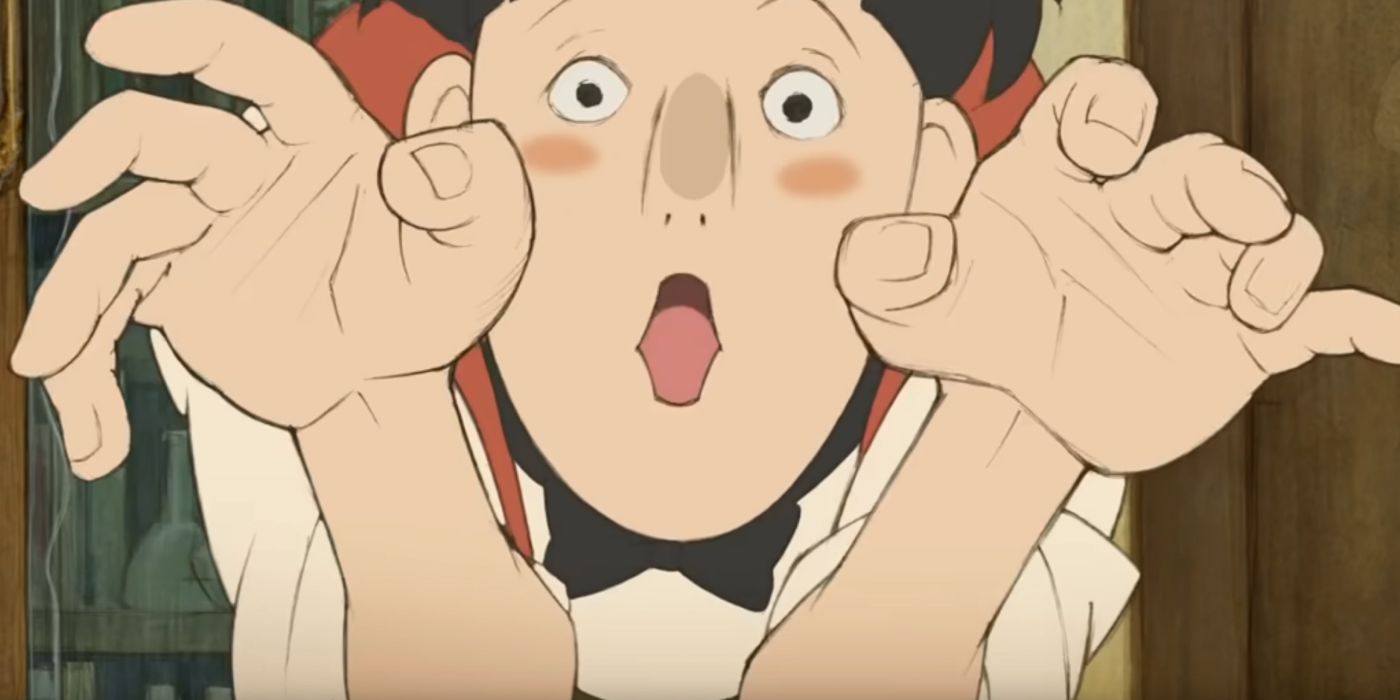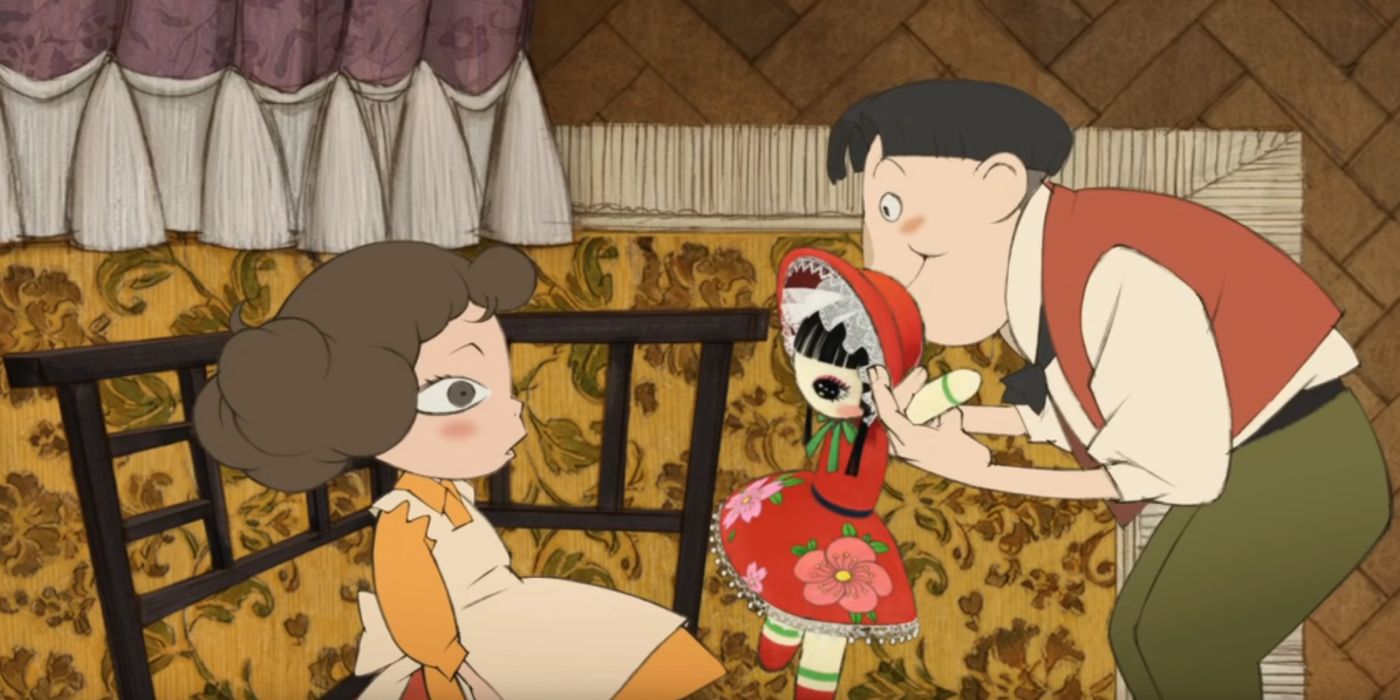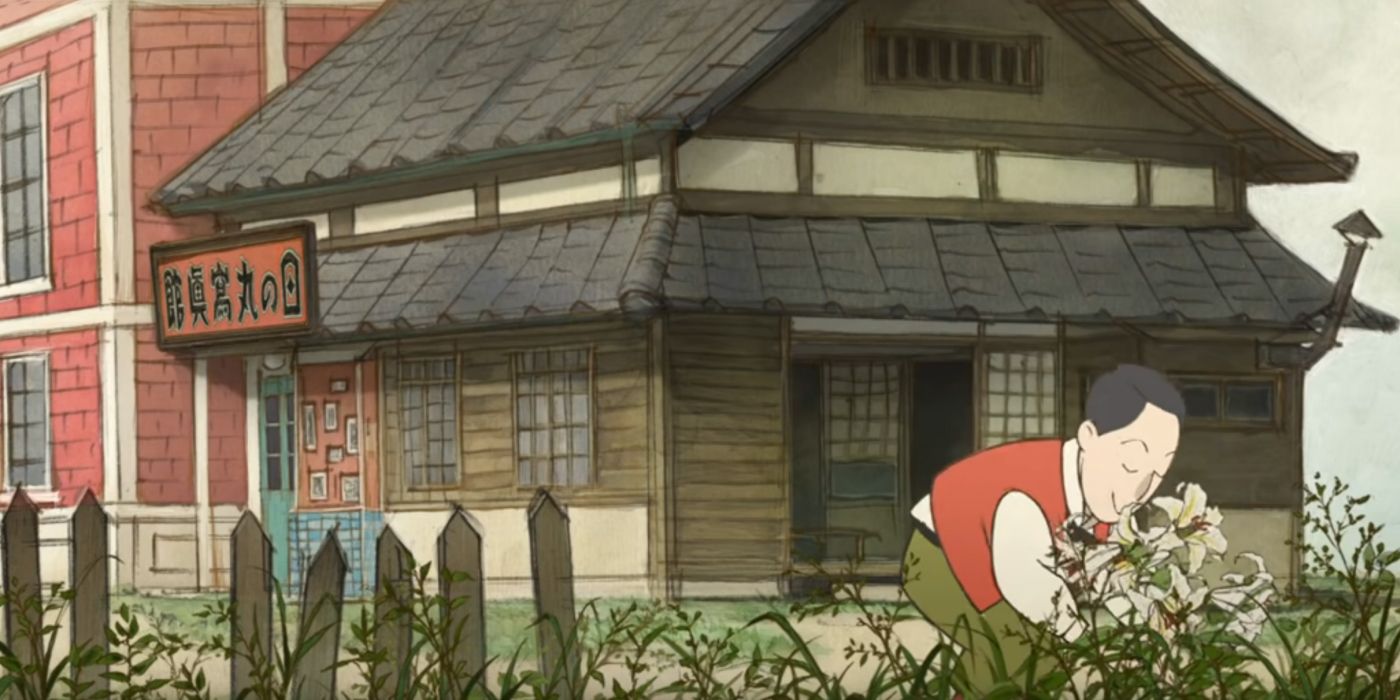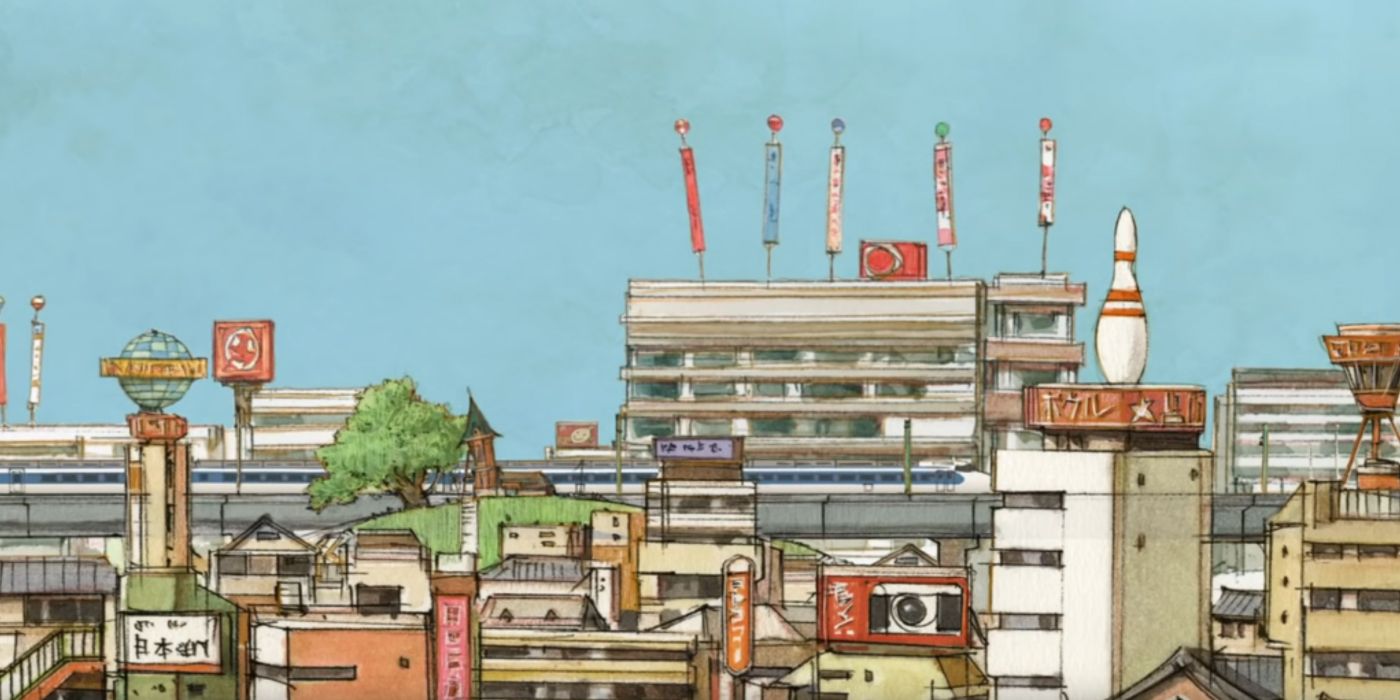The Portrait Studio (Shashinkan) is a short-animated film directed by Takashi Nakamura and released in 2013. The story follows the life of a portrait photographer and his relationship with three generations of a family living in Tokyo throughout the 19th and 20th centuries. With each photo taken, the environment, clothing, and characters change to reflect the times they’re living in. The short largely focuses on the exchanges between the owner and a young girl, who struggles to smile for her photograph. With each year that passes, the artist does everything in his power to make her happy, but fails time and time again.
Without any narration or dialogue, The Portrait Studio instead relies on its expressive animation style and fantastic score, composed by Jun Ichikawa (Pokemon: Diamond & Pearl), to convey the characters' emotions along the journey they take. Despite its 16-minute length, the short does an excellent job of building its world, characters, and the viewer's connection with them. By the end of the film, viewers will likely have a tear in the eye and leave with an important message about how to live a fulfilled life.
The Portrait Studio’s Plot
The Portrait Studio opens with a recently married couple walking up the steps of the artist's workshop that rests on a hill overlooking the city. The wife of the military man sits down to have her photograph taken, however, she is so shy that she finds it difficult to look up at the camera and smile. Despite the owner's best efforts, she remains sullen and unwilling to participate. In a moment of realization, the portraitist gets up to pick a bouquet of flowers for the woman to hold. Finally, she looks up and smiles at him so he can take the picture.
Years later, the same couple return to the photographer’s shop, but this time they have brought their recently birthed child. While the mother quickly looks up and smiles, her little girl is far less eager to cooperate. This behavior persists throughout her childhood, and it seems there is little the owner can do to make her smile. Whether it’s pulling funny faces, whirling puppets ferociously, blowing whistles or dancing, she continues to frown. Eventually, the photographer can do little but take his picture and allow the family to leave with a memento of their grumpy daughter.
Time passes and the young girl has become a woman. Regardless of her newfound maturity, she’s still unable to smile for the camera and continues to walk through life with an air of sadness. The now middle-aged photographer witnesses several catastrophes from an earthquake that destroys much of the surrounding area, to the bombardments of war that wreak havoc on his local community. The resulting chaos leads both the woman’s father and teenage son to perish, leaving her in an even greater state of misery.
During the modern era, the woman has been left fatherless, widowed and without an heir. The only person who remains a constant in her life is the photographer, whom she cares for in his old age. She remains as solemn in her final days as she was in her youth; however, after finding a series of pictures that have been taken over the years, she is finally able to reflect on all the positive things that have taken place in her life. After the portrait studio owner requests they sit down together for a photograph, she is finally able to smile.
The Portrait Studio’s Themes & a Crucial Message About Life
The Portrait Studio examines ideas surrounding time, memory, human bonds and happiness. While they are singular moments, the pictures the photographer takes act as important reminders of the events that have taken place within the family’s life. Whether it’s marriage, birth, personal achievements or even death, the artist remains a stable figure. The photographs he takes are able to capture impermanent slices of time and allow the viewer to be reminded of the people, places, and even eras they once inhabited.
While portrait photography typically intends to promote the happy moments in a person's life, the artist instead finds himself taking pictures of a girl who is incapable of smiling. This juxtaposition reflects the difficult circumstances of Japan during this period. From the Great Kantō Earthquake of 1923 to the devastation of Tokyo in the 1940s due to American bombing, the woman’s sadness, which is shown even shortly after her birth, foreshadows the challenging life she’ll have to lead.
The camera acts as a symbol of the constant change that took place around the world from the Meiji to Shōwa periods. The photographer not only takes pictures of people throughout the different stages of their life, but also how their clothing, customs and environment alter alongside them. From a relatively small town built out of wood, Tokyo transforms into a towering cityscape made of metal and concrete. The serene, nature-filled landscapes that once surrounded the people of this area have now been switched to commercial props, trains and bustling sidewalks. As the characters enter their twilight years, Japan has begun to boom.
The short ends with an important message on how people should live their lives. The woman appears to have lived a life of suffering in which she’s struggled to find happiness. From losing her father, husband, and son she has become embittered and unable to realize the gifts she’s been given. Even in childhood, she seems to have focused on the negative elements surrounding her and become lost in her rigid perception. However, in her old age, she begins to understand she’s been loved and starts to be thankful for the life she’s led. The Portrait Studio sends a warning that we as viewers should be grateful for the wonderful things surrounding us and not let even the most terrible circumstances poison the gifts that have been given.
Nakamura’s beautiful animation, combined with Ichikawa’s classical piano score, offers an extremely pleasurable watch for anyone who’s looking for a touching story. Much like La Maison en Petits Cubes, The Portrait Studio manages to condense a series of powerful human emotions into a few well-built characters despite its lack of dialogue. Being removed from language enables the work to truly become a universal experience, regardless of the film's setting.

